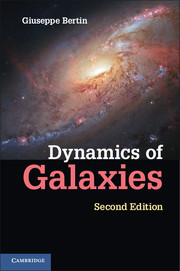Book contents
- Frontmatter
- Contents
- Preface to the Second Edition
- Preface to the First Edition, 2000
- Acknowledgments
- PART I Basic Phenomenology
- 1 Scales
- 2 Observational Windows
- 3 Classifications
- 4 Photometry, Kinematics, and Dark Matter
- 5 Basic Questions, Semiempirical Approach, and the Dynamical Window
- PART II Physical Models
- PART III Spiral Galaxies
- PART IV Elliptical Galaxies
- PART V In Perspective
- Bibliography
- Index of objects
- Index
4 - Photometry, Kinematics, and Dark Matter
from PART I - Basic Phenomenology
Published online by Cambridge University Press: 05 June 2014
- Frontmatter
- Contents
- Preface to the Second Edition
- Preface to the First Edition, 2000
- Acknowledgments
- PART I Basic Phenomenology
- 1 Scales
- 2 Observational Windows
- 3 Classifications
- 4 Photometry, Kinematics, and Dark Matter
- 5 Basic Questions, Semiempirical Approach, and the Dynamical Window
- PART II Physical Models
- PART III Spiral Galaxies
- PART IV Elliptical Galaxies
- PART V In Perspective
- Bibliography
- Index of objects
- Index
Summary
Normal galaxies have a variety of sizes and morphological categories. In this chapter their main empirically established structural characteristics are summarized schematically, and the problem of dark matter in the general cosmological context is briefly introduced. The problem of dark matter in galaxies will be better formulated in Chapter 5, among other broad issues addressed in this book, and will be discussed separately for spiral galaxies (Chapter 20) and for elliptical galaxies (Chapter 24) after the relevant dynamical tools have been properly developed.
Our world of galaxies is biased in favor of bright objects and against objects with low surface brightness. However, the tail of the galaxy luminosity function is widely populated by low-surface-brightness galaxies. We should thus be aware that our knowledge of the structure of galaxies and the discussion of the dynamics of normal galaxies that have been developed so far have focused mainly on bright galaxies; much remains to be done for fainter systems.
From astronomical observations, we ideally would wish to extract information on mass distributions and overall kinematics (mean flow motions and velocity dispersions). In practice, we must interpret images and spectroscopic information, gathered through various observational windows, and we must mediate the process by simplified models. Obviously, a major source of uncertainty is the a priori unknown three-dimensional structure of the object under investigation because the data give us quantities projected along the line of sight.
- Type
- Chapter
- Information
- Dynamics of Galaxies , pp. 29 - 52Publisher: Cambridge University PressPrint publication year: 2014



